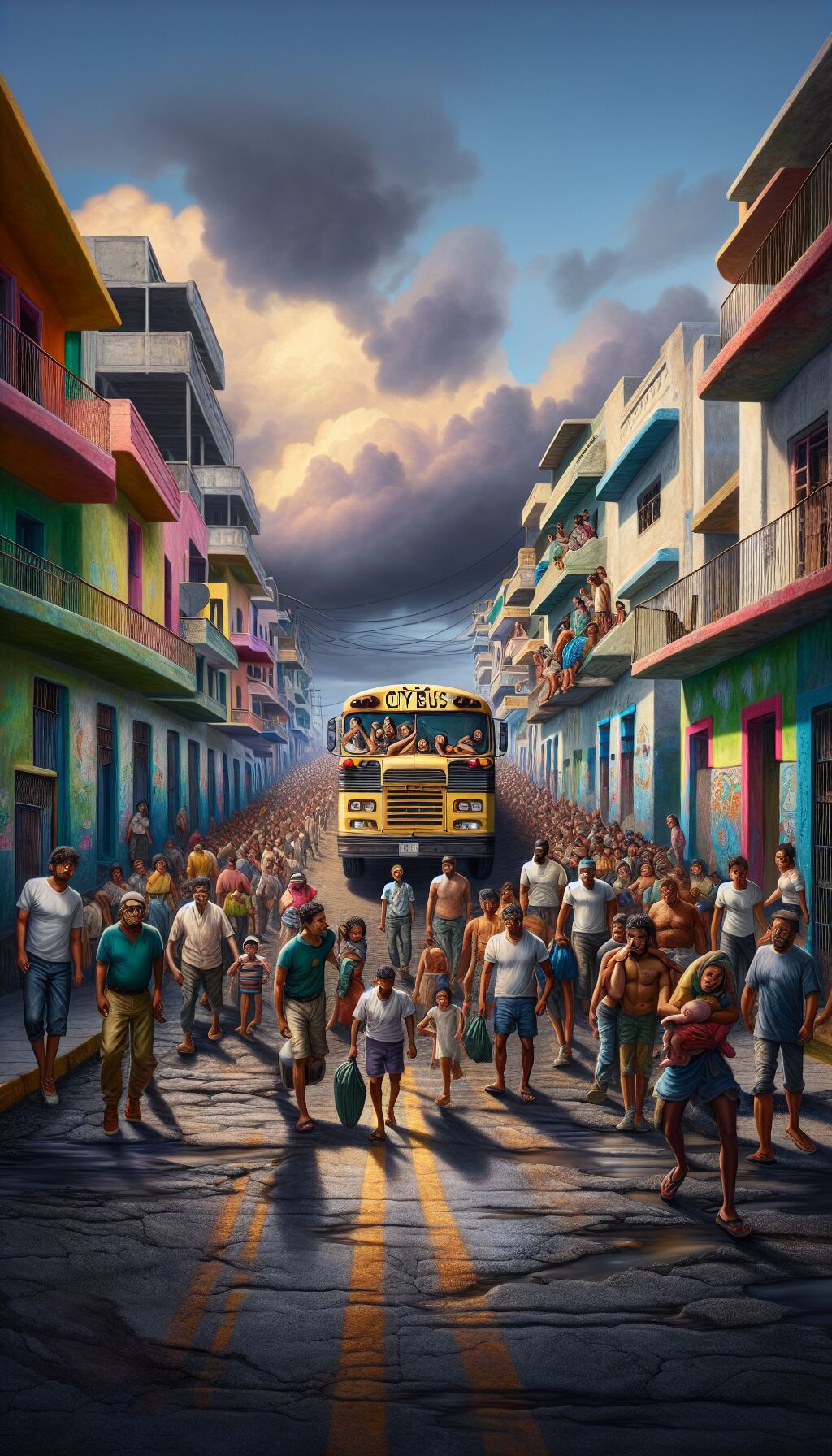Migrant Crisis: Mexico’s Strategy Amid U.S. Political Shift
The ongoing migrant crisis has reached a critical juncture as the Mexican government intensifies its efforts to dismantle migrating caravans heading toward the United States. With less than two weeks remaining before President-elect Donald Trump’s inauguration, authorities are implementing stringent measures to manage the situation.
Desperate Times Call for Desperate Measures
Facing the chilling prospect of substantial tariffs on goods under the incoming administration, Mexican authorities have resorted to a tactic known as “dispersion and exhaustion.” This strategy aims to dissipate migrant groups across the country, far from the U.S. border. In one notable action, officials have begun transporting migrants to the beleaguered city of Acapulco, once a thriving tourist destination but now plagued by crime and the aftermath of Hurricane Otis, which struck in late 2023.
Acapulco was once the crown jewel of Mexico’s tourism industry, basking in the glow of the jet set in the 1950s and 1960s. However, current dynamics reveal a grim reality, with the city grappling with organized crime and one of the highest homicide rates in Mexico. The arrival of migrants adds another layer of complexity to an already volatile environment.
The Plight of the Migrants
Authorities are reportedly dropping busloads of migrants in Acapulco with minimal support and scant options for onward travel. Many of these individuals had been led to believe that they could continue their journey north after temporarily being relocated. Instead, they find themselves essentially abandoned in a precarious situation.
“Immigration (officials) told us they were going to give us a permit to transit the country freely for 10, 15 days and it wasn’t like that,” stated 28-year-old Venezuelan migrant Ender Antonio Castañeda. “They left us dumped here without any way to get out. They won’t sell us (bus) tickets. They won’t sell us anything.”
The Surge of Migrants
Castañeda is among thousands who had departed from Tapachula, a city near the Guatemalan border, hoping to reach the U.S. before Trump’s administration takes office. Many migrants have opted to travel in caravans for safety in numbers, believing that large groups of people are less vulnerable to being detained by immigration agents.
The journey to the U.S. border can be treacherous; it would take an adult migrant approximately 16 days of continuous walking to reach the southernmost point of the U.S. border at Matamoros, near Brownsville, Texas.
Trump’s Tough Stance on Immigration
The incoming Trump administration is anticipated to take a hardline approach to immigration, especially concerning illegal crossings that have surged under President Biden’s tenure. Trump has publicly threatened to impose a 25% tariff on goods imported from Mexico, pressuring the nation to curb the influx of migrants.
In a recent briefing, Trump reiterated his commitment to addressing the immigration crisis, asserting, “Mexico has to stop allowing millions of people to pour into our country. They can stop them. And we’re going to put very serious tariffs on Mexico and Canada, because Canada, they come through Canada too, and the drugs that are coming through are at record numbers.” His remarks underscore the administration’s resolve to tackle both the migrant crisis and drug trafficking head-on.
A Harrowing Reality
As migrants wait in dire conditions, concerns surrounding extortion and kidnapping loom large. Reports indicate that criminal syndicates are increasingly targeting vulnerable migrants for exploitation, which adds another layer of danger to their already precarious situation. Many migrants have claimed that they have also encountered extortion from local authorities as they navigate their journey through Mexico.
The dire conditions faced by these migrants stand in stark contrast to the promises made by immigration officials, who claim to be assisting them in navigating the complexities of immigration policy. As the human cost of these policies mounts, the question arises: what does the future hold for those seeking a better life in the United States?
Conclusion
With the political landscape shifting dramatically in the U.S., Mexico finds itself at a crossroads, grappling with the complexities of the migrant crisis. The strategy of dispersion may provide a temporary reprieve, but it raises ethical questions about the treatment of vulnerable populations. As migrants linger in places like Acapulco, their hopes remain pinned on a future that seems increasingly uncertain, and the world watches to see how both nations will respond to this ongoing humanitarian challenge.












